The book makes a comprehensive and analytical study of theories of Demand, production/cost and determination of price and output of products in different market structures. It also discusses theory of factor pricing and income distribution as wages, rent, interest and profits. Above all, it critically analyses the conditions of economic efficiency and maximum social welfare and causes of market failures. It takes a further lead with this revision by aligning its contents with the prescribed UGC model curriculum and new choice based Credit System (CBCS) syllabus., syllabi relevant: updated and revised topics as per UGC model curriculum and new choice based Credit System (CBCS) syllabus, New chapters: Production process and profit-maximising behaviour of firms; economic efficiency of perfect competition; remedies of Monopoly; market failures and its sources; Externalities and market failure; public Goods and market failure; problem of imperfect information and market for lemons and social choice and role of government, student friendly features: Clear and comprehensive presentation and extensive use of graphs to understandably illustrate the economic principles
part – I: Introduction
- 1. The economic problem: scarcity and choice
- 2. The scope of economics
- 3. The methodology of economics
- 4. Free market economy and other economic systems
- 5. Demand, supply and competitive market Equilibrium
- 6. Applications of Demand and supply analysis
- 7. Elasticities of Demand and supply
- 8. Applications of elasticities of Demand and supply
- 9. Consumer’s behaviour: Marshall's Cardinal utility analysis
- 10. Consumer surplus
- 11. Indifference curve analysis of Demand
- 12. Cardinal utility analysis vs. Indifference curve analysis
- 13. Applications and uses of indifference curves
- 14. Labour supply and saving decisions
- 15. Production process and profit-maximising behaviour of firms
- 16. Factors of production
- 17. The theory of production: returns to a variable factor
- 18. Production function with two variable factors
- 19. Least cost factor combination: technological choice
- 20. Cost of production and cost curves: short run and Long run
- 21. Market structures and concepts of revenue
- 22. Objectives of the Firm – a general analysis
- 23. Equilibrium of the Firm under perfect competition
- 24. Equilibrium of the industry and Long-Run supply curve under perfect competition
- 25. Economic efficiency of perfect competition
- 26. Price and output under Monopoly
- 27. Price discrimination
- 28. Drawbacks and remedies for Monopoly
- 29. Price and output under Monopolistic competition
- 30. Price and output under Oligopoly
- 31. Classical models of Oligopoly: Cournot and Bertrand's models
- 32. Theory of games and strategic behaviour
- 33. Full-cost or Mark-up pricing and sales is at I on models
- 34. Market failures and its sources 35. Externalities and market failure
- 36. Public Goods and market failure 37. Imperfect information problem
- 38. Social choice, role of government and its inefficiency part – VII: theory of distribution
- 39. Pricing of factors (inputs) and distribution of Income: A general view
- 40. Labour market: Determination of wages
- 41. Land market and the theory of rent
- 42. Alternative theories of interest
- 43. Theory of profits
- 44. International trade: Absolute advantage theory and comparative cost theory
- 45. Heckscher-ohlin theory of international trade and terms of trade
- 46. Trade barriers and free trade versus protection
- 47. Welfare economics and role of value judgements
- 48. Pareto criterion and economic efficiency: General Equilibrium approach
- 49. Kaldors Hicks’ welfare criterion: Compensation principle
- 50. Social welfare function.
S. Chand's Principles of Microeconomics by H. L. Ahuja
- Publisher: S. Chand & Co.
- Book Code: 9789352837311
- Availability: 10
-
Rs375.00
Related Books
S. Chand Modern Micro Economics (Theory and Applications) 16/e by Dr. H.L. Ahuja
S. Chand Publication's Modern Microeconomics Theory & Application by Dr. H.L. Ahuja Conte..
Rs475.00
Taxmann's Micro Economics for BSL & LL.B by Dr. Pradeep Kumar Mehta & Dr. (Mrs.) Meena Singh
This is a book on Micro Economics compiled by Dr. Pradeep Kumar Mehta & Dr. (Mrs.) Meena..
Rs360.00
S. Chand's Business Economics: Microeconomic Analysis by H. L. Ahuja
This edition is specially revised to cater to the changed syllabi requirements of business economi..
Rs495.00
Diamond Publication's Micro Economics (Sem 3 and 4) | Sukshma Arthashastra by Dr S. V .Dhamdhere [Marathi-सूक्ष्म अर्थशास्त्र सत्र ३ व ४ एकत्रित]
सावित्रीबाई फुले पुणे विद्यापीठाच्या २०२०-२०२१ च्या द्वितीय वर्ष कला शाखेच्या (S.Y.B.A) सुधारित अभ्य..
Rs250.00


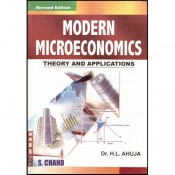
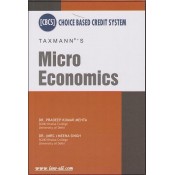
![S. Chand's Business Economics for CA Foundation June 2018 Exam [New Syllabus] by S. K. Agarwal | CA CPT S. Chand's Business Economics for CA Foundation June 2018 Exam [New Syllabus] by S. K. Agarwal | CA CPT](https://law-all.com/image/cache/catalog/data/Book Images/S. Chand/2018/9789352833559-175x175.jpg)
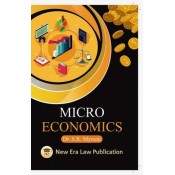
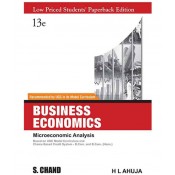
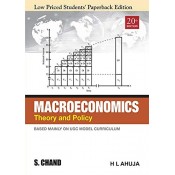
![Diamond Publication's Micro Economics (Sem 3 and 4) | Sukshma Arthashastra by Dr S. V .Dhamdhere [Marathi-सूक्ष्म अर्थशास्त्र सत्र ३ व ४ एकत्रित] Diamond Publication's Micro Economics (Sem 3 and 4) | Sukshma Arthashastra by Dr S. V .Dhamdhere [Marathi-सूक्ष्म अर्थशास्त्र सत्र ३ व ४ एकत्रित]](https://law-all.com/image/cache/catalog/data/Book Images/Diamond Pub/2023/9789386401946-175x175.jpg)